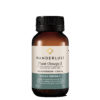Native to Europe, this perennial is now widely cultivated as an ornamental flower as well as for its medicinal properties (leaves, flowers and the root). The typical habitat for the Marshmallow plant is near marshes, riverbanks and other damp areas.
The botanical name Althaea is derived from the Greek word althein meaning “to heal” whilst Officinale is traditionally used to refer to a plant with health and medicinal properties that was sold in the apothecary.
Although the confectionary marshmallow does not contain the extract of the marshmallow plant, this was not always so. The original making of marshmallow included egg whites, sugar and the sticky contents of the marshmallow plant’s root – now evolved, today’s marshmallow no longer contains the plant’s extract.





